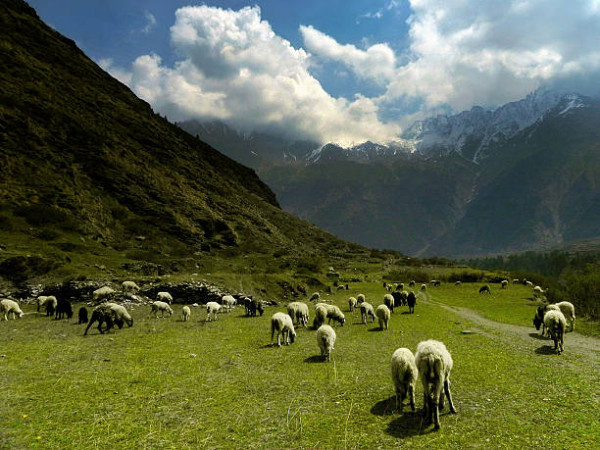
Kumaon
Duration
5 to 10 Days
5 to 10 Days
Best time to visit
Mar-Jun, Sep-Nov
Mar-Jun, Sep-Nov
Theme
Hill Station, Adventure, Wildlife
Hill Station, Adventure, Wildlife
Kumaon Travel Guide
Kumaon, located in the northern part of India, is a region known for its breathtaking beauty and rich cultural heritage. This hilly area is famous for its scenic views of the Himalayas, lush green forests, and serene lakes. Historically, Kumaon was a part of the Kumaon Kingdom and has a deep-rooted cultural significance in Indian history.Top Attractions in Kumaon
- Nainital Lake
- Jim Corbett National Park
- Kausani
- Binsar Wildlife Sanctuary
- Ranikhet
Kumaon is Famous for
Kumaon is famous for its picturesque hill stations, wildlife sanctuaries, and the stunning views of the Himalayan peaks that it offers.Top Attractions in Kumaon
- Boating in Nainital Lake
- Wildlife safaris in Jim Corbett National Park
- Scenic views of the Himalayas from Kausani
- Trekking in Binsar Wildlife Sanctuary
- Exploring ancient temples in Ranikhet
What's Great about Travelling to Kumaon?
- **Spectacular** views of the Himalayas
- **Rich** cultural heritage
- **Perfect** destination for nature lovers
What's Not So Great about Travelling to Kumaon?
- **Limited** connectivity to some remote areas
- **Harsh** winters may not be suitable for everyone
- **Altitude** sickness can be a concern
Travel Tips for Kumaon
- **Visa** requirements vary, so check before traveling
- **Public** transportation is limited in some areas
- **Carry** warm clothing, especially in winters
Important Kumaon trip information
- Ideal Duration: A week to fully explore the region
- Best Time to Visit: March to June and September to November
- Nearby Airports and Railway Stations: Pantnagar Airport and Kathgodam Railway Station
Top 7 Places to visit in Kumaon
FAQ's on Kumaon
Q1: What is the best time to visit Kumaon?
The best time to visit Kumaon is from March to June and September to November. During these months, the weather is pleasant, making it ideal for outdoor activities and sightseeing. Avoid the monsoon season from July to August, as heavy rainfall may lead to landslides. Winter months from December to February are perfect for snow lovers and those interested in winter sports like skiing. Keep in mind that certain festivals and events may also influence the best time to visit, so check the local calendar for any celebrations you might want to experience.
Q2: Do I need a visa to travel to Kumaon?
Most tourists traveling to Kumaon will need a valid Indian visa. However, if you are from a neighboring country like Nepal or Bhutan, you may be exempt from visa requirements. It's important to check with the Indian embassy or consulate in your country for specific visa regulations. Make sure your passport is valid for at least six months from the date of entry. Additionally, if you plan to visit certain restricted areas in Kumaon, you may need special permits, so inquire about these in advance.
Q3: What are the must-visit attractions in Kumaon?
Kumaon is known for its stunning natural beauty and diverse attractions. Some of the must-visit places include Nainital with its picturesque lake and surrounding hills, Jim Corbett National Park for wildlife enthusiasts, Almora for its ancient temples and scenic views, and Ranikhet for its peaceful atmosphere and colonial charm. Don't miss the scenic hill stations like Mukteshwar and Kausani, offering panoramic views of the Himalayas. Adventure seekers can explore treks in places like Binsar Wildlife Sanctuary or go paragliding in Bhimtal. Whether you're into nature, wildlife, or cultural heritage, Kumaon has something for every traveler.
Q4: Is Kumaon a safe place to travel?
Kumaon is generally a safe destination for travelers. However, like any other place, it's advisable to take common safety precautions. Avoid walking alone at night in secluded areas and be cautious of your belongings in crowded places. While wildlife encounters are rare, it's essential to follow guidelines in national parks and wildlife reserves. Stay informed about weather conditions, especially during monsoon or winter seasons when some areas may be prone to natural disasters. By staying alert and being respectful of local customs, you can have a safe and enjoyable trip to Kumaon.
Q5: What is the local currency in Kumaon and can I use credit cards?
The local currency in Kumaon, as in the rest of India, is the Indian Rupee (INR). You can exchange foreign currency at banks, exchange offices, and hotels. ATMs are widely available in major towns and cities for withdrawing cash. Credit and debit cards are accepted at many hotels, restaurants, and shops in urban areas, but it's advisable to carry some cash for smaller establishments or rural areas. Notify your bank before traveling to ensure your cards will work in India, and be aware of any foreign transaction fees that may apply.
Q6: What is the local cuisine like in Kumaon?
Kumaoni cuisine is a delightful mix of flavors and ingredients that reflect the region's culture and traditions. Some popular dishes to try include **Bhatt ki Churkani**, a black bean curry; **Aloo Ke Gutke**, spiced potatoes; **Bal Mithai**, a sweet made of khoya and coated with sugar balls; and **Singal**, a crispy snack made from lentil flour. Don't miss trying the local specialty **Bhang Ki Chutney**, made from hemp seeds. Kumaon is also famous for its use of local grains like mandua (finger millet) and jhangora (barnyard millet) in various dishes. Vegetarians will find plenty of options, and dairy products like fresh cream and ghee are commonly used in cooking. Embrace the flavors of Kumaon for a unique culinary experience.
Q7: What transportation options are available in Kumaon?
Getting around Kumaon is relatively easy, with various transportation options to choose from. Public buses and shared jeeps connect major towns and cities, offering an affordable way to travel. Taxis and auto-rickshaws are also available for shorter distances or private hire. Renting a car or hiring a driver is another convenient option, especially for exploring remote areas or planning day trips. Motorbikes and bicycles can be rented in some tourist hubs for independent travel. For longer journeys, consider taking overnight trains or buses to reach Kumaon from major cities like Delhi or Lucknow. Plan your transportation based on your itinerary and comfort level, and enjoy the scenic routes that Kumaon has to offer.
Q8: Are there any cultural norms or etiquette I should be aware of when visiting Kumaon?
When visiting Kumaon, it's important to respect the local customs and traditions of the region. Greet people with a **Namaste** (folding hands) as a sign of respect. Dress modestly, especially when visiting religious sites or rural areas. Remove your shoes before entering temples or homes. Avoid public displays of affection, as these may be frowned upon in traditional communities. Seek permission before taking photographs of locals, especially in remote villages. If invited to someone's home, it's polite to bring a small gift or some sweets. Be mindful of wildlife and nature conservation guidelines when visiting national parks or reserves. By showing respect for the local culture and environment, you can have a more meaningful and enriching experience in Kumaon.
Q9: I am a travel agent. How can I buy travel leads of Kumaon?
Register yourself as a travel agent at agents.tripclap.com and then you can buy travel leads to Kumaon once your account is approved. For more details contact our support team at +91-8069186564 or support@tripclap.com

